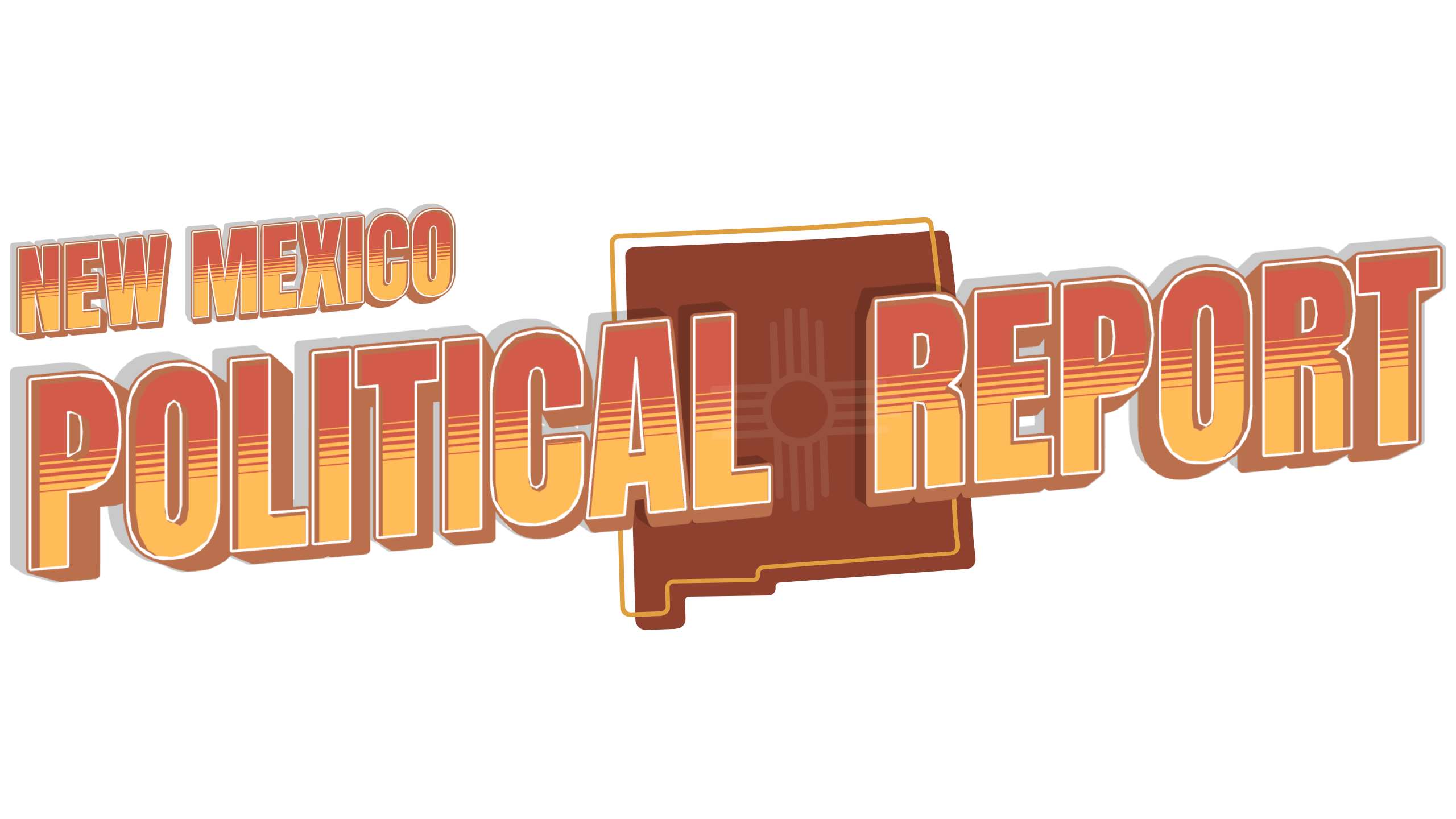Commentary & Analysis
Dede Feldman served as a state senator from Albuquerque’s North Valley under three governors. During her 16 years in the Senate she served as Chair of the Medicaid Reform Committee and the Health and Human Services Committee.
By Dede Feldman — The joint federal-state health program known as Medicaid has gotten more coverage in the past few weeks than I’ve seen in the past 25 years, and as a former legislators charged with overseeing—and reforming—New Mexico’s program, I’ve seen a lot. The New Mexico program, now known as Turquoise Care, is different than programs in other states. Its peculiar characteristics will determine just how hard the 2025 Budget Reconciliation Bill (“The Big Beautiful Bill” ) will hit the state’s 814,000 enrollees who constitute 38.5% of our population.

The forecast from the NM Healthcare Authority is dire. When implemented in 2027, the Authority estimates that the bill will have a $2.8 billion negative impact on NM, with 92,000 potentially losing coverage altogether and 250,000 facing increased co-pays, work requirements and bureaucratic obstacles. Six to eight rural hospitals (including Taos, Las Vegas and Clayton) could close because the bill cuts off a key funding mechanism in which hospital taxes are used to enhance New Mexico’s federal matching funds. As many as 1300 local jobs could be lost—not to mention the effects on local doctors and other providers, already in short supply.
But how does the Medicaid program work anyway, and why are so many New Mexicans dependent upon it? Here’s a simplified primer.
What is Medicaid? Medicaid is a program started in 1965 as part of Lyndon Johnson’s Great Society. It is a federal-state program which provides health insurance for low-income children, their families, people with disabilities and seniors in nursing homes. The program is operated by each state. with funding from both the state and the feds. Each state has somewhat different benefit and eligibility levels.
In New Mexico, because our income level is one of the lowest in the country, the federal government has matched each dollar the state spends with three federal dollars. Combined with our high enrollment numbers, that’s the reason the NM Medicaid budget is $11.8 billion this year, more than the entire state budget, which is $10.8 billion.
What are some unique characteristics of our Medicaid program?
Since 1997, our Medicaid program has been contracted out to managed care companies, which then contract with medical providers and hospitals to provide care to the 814,000 enrollees. In other states services are paid for directly by the state. This year the participating MCOs are Blue Cross Blue Shield, Presbyterian, Molina and United Health Care.
Special populations—people with disabilities, medically fragile children—receive services through waiver programs which allow benefits to be tailored to special needs.
Non-citizens are ineligible for NM Medicaid.
About 2/3 of the adults on Medicaid in NM are already working.
Family income determines eligibility, based on the size of the family and the poverty guidelines set by the federal government. In NM a family of three with an annual income of $35,448 ($2,954/mo.) would qualify. Eligibility levels for pregnant women, children in the Children’s Health Program, those enrolled through various program expansions may be a little different. Interpreting the various eligibility levels, and qualifying applicants is a complex task performed by the NM Human Services Department.
Why are so any people on Medicaid in New Mexico?
Approximately 38% of NM residents (814,000) get insurance coverage through Medicaid. Over half the state’s births are financed by the program. Is this a good or a bad thing? The basic idea behind the program from the start is that when families get regular, preventative care they will be healthier, more productive students and workers. They will also present at the emergency room less frequently, where care is more expensive.
The basic reason for so many people is that family income level is low in NM and so more people qualify. Even those who work qualify because wages are relatively low.
Over the years the program has expanded to include more people. In the 1990s Congress created a new part of the program–the Children’s Health Insurance Program (CHIP). Thanks to US Senator Pete Domenici and state legislators the program included benefits for behavioral healthcare in the early 2000s. The Affordable Care Act (Obamacare) gave states the option to expand Medicaid further in 2010, and Gov. Susanna Martinez opted to do so in 2014. Thousands more became eligible for the coverage during Covid. The eligibility level was then rolled back after the epidemic ended.
How is Medicaid Related to Obamacare?
Medicaid was a pillar of the Affordable Care Act (Obamacare). All but a few states decided to expand it to take advantage of the federal funds. For those who fell outside the eligibility level, state insurance exchanges (ours is called Be Well New Mexico) were created to provide more affordable coverage, using tax credits. All care is provided under the managed care model. Under the Budget Reconciliation Bill those tax credits expire, making insurance unaffordable for thousands more.
When people do not have health insurance because they cannot afford it, they appear at urgent care centers and emergency rooms for treatment, which must be provided by law. To cover the cost, hospitals charge paying customers and those covered by insurance companies more. Insurance companies then shift the cost by increasing premiums for their customers.
Under the Affordable Care Act the uninsured rate had gone down to 8% nationwide, the lowest level ever.
Without claiming to do so, the tax bill is unraveling Obamacare nationwide, and setting off a spiral of higher healthcare costs.
What is the Economic impact of Medicaid in NM?
Medicaid reimbursement for services provided by doctors and hospitals forms a substantial portion of income for providers. As they will tell you, reimbursement levels are already low in NM—yet they often set the pace for other reimbursement levels by private insurance. The reduction in revenue that will come from Medicaid cuts threatens the existence of rural hospitals, already operating on the margin. These hospitals are often the economic hub of small communities, providing employment for related businesses and multiplying economic activity. The NM Health Care Authority estimates that six to eight rural hospitals could close and 1300 lose their jobs.
The difficulty of recruiting and sustaining medical providers in NM is well known. The new law will exacerbate the situation.
Has the state attempted to reform its Medicaid program to cut costs?
At the state level, there have been many attempts to reform Medicaid. Some sought to build on the program and its generous match from the federal government. Others have tried to control costs. To help rural hospitals, New Mexico—like every state except Alaska—taxes hospitals, nursing homes and other facilities and then uses that money as a match for federal dollars. Under the new bill these taxes must be lowered, and the state will no longer be able to use that mechanism to funnel the enhanced matching funds to providers. The tax bill, however, does include a $50 billion rural hospital fund into which hospitals and others may tap.
The basic way to cut Medicaid is to restrict eligibility, cut benefits, increase co-pays and deductibles—all drastic unpopular measures. Less transparent measures –bureaucratic obstacles, such as frequent re-enrollment, excessive paperwork for beneficiaries–proof of work, volunteer activities, pregnancy or missing birth certificates are ways of thinning the ranks. Work requirements, reporting requirements, will add another element for the 2/3 of recipients who are already working as well as those who do not have jobs.
Changes in the Medicaid program also require education to let the public know the new rules. They also require IT changes in the states’ computer systems to incorporate new rules, a costly and time-intensive process.
What Can NM Do to Mitigate the Harm to Medicaid recipients and providers?
The bill does not go into effect until 2027, giving the state some time to revamp its systems and decide how to fill the gap.
As a result of surplus revenue from oil and gas, the NM legislature has been able to create several trust funds that may help replace some of the lost federal revenue. Just this year, a $200 million Medicaid Trust Fund was begun, as well as a $1 billion Behavioral Health Trust Fund.
During the 2025 interim, legislative committees will begin to address the problem. A special subcommittee of the LFC, the Federal Funding Stabilization Subcommittee, is currently analyzing the impact of the bill, and there is the possibility of a special session.

Well written. Certainly a more balanced commentary than much of the media coverage the last few months.
Thank you Dede Feldman for such a complete picture.
Cuts go into effect in 2027, so if the midterm elections swing comes the other way, congress could refund the program. But would Trump veto it?
Thankyou. I did not know the bill would cut subsidies for individuals who have health insurance on the Exchange. How cruel!!!!
Great information! Thank you!
Thank you Dede Feldman for a balanced report.